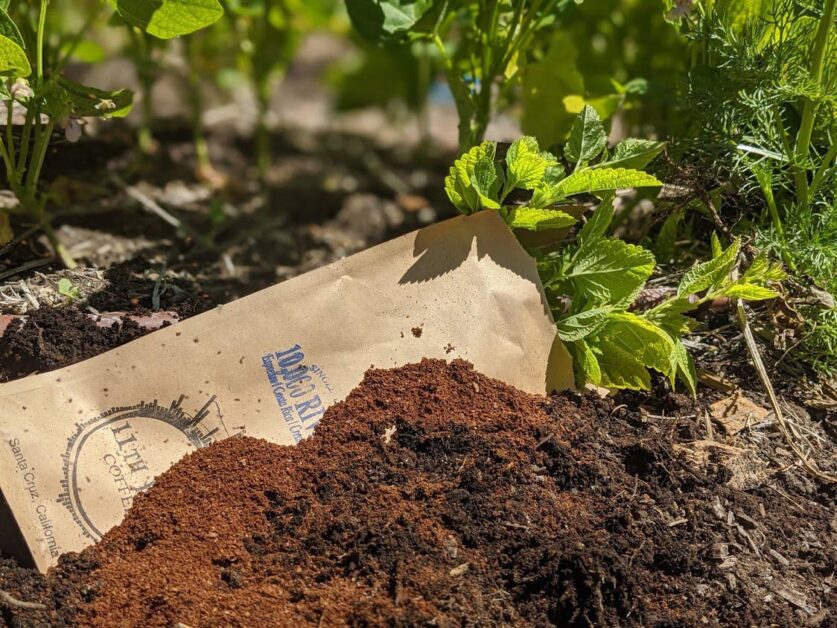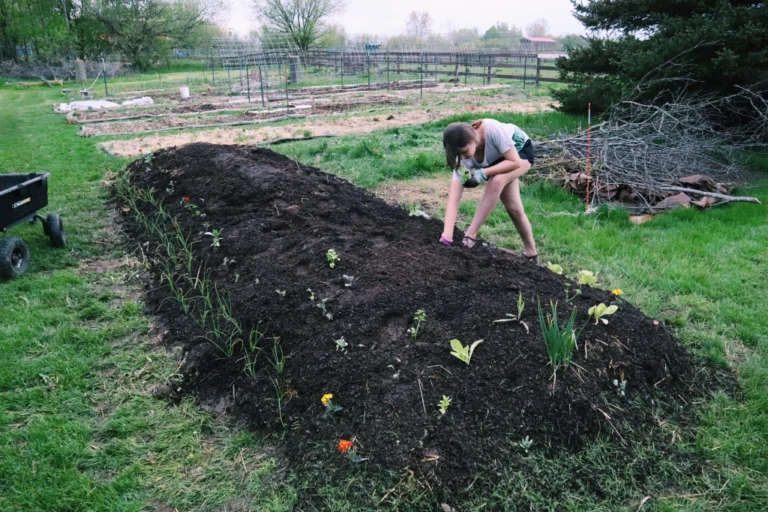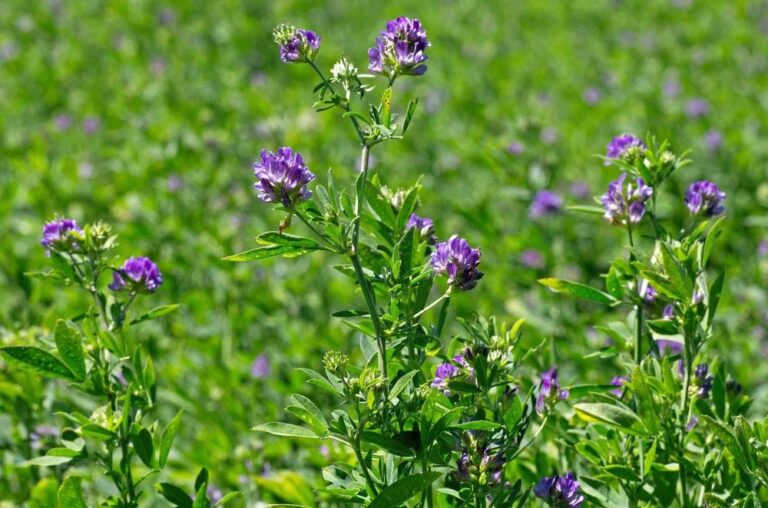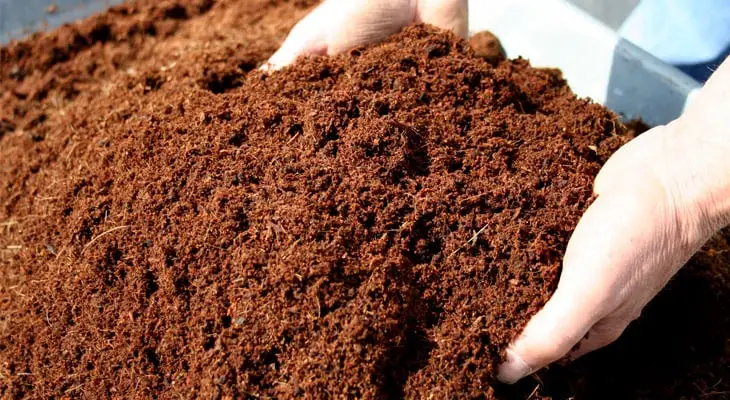Coffee Grounds Composting: A Complete Guide to This Free and Easy Method
Did you know that your morning coffee ritual could also be the secret ingredient for supercharging your garden? Yes, you heard it right! Coffee grounds composting is not only eco-friendly but also a budget-friendly way to enrich your soil and nurture your plants. In this comprehensive guide, we’ll dive into the nitty-gritty of how to turn your leftover coffee grounds into black gold for your garden.
From understanding the science behind composting to practical tips for getting started, we’ve got you covered. So, grab your coffee mug and let’s brew up some nutrient-rich goodness for your garden!
Table of Contents
Understanding the Basics of Coffee Grounds Composting
Coffee grounds composting is a practice that has gained popularity among gardening enthusiasts for its numerous benefits. Composting coffee grounds not only reduces waste but also enhances the fertility of the soil, leading to healthier plants and higher yields. It is a sustainable way to repurpose your used coffee grounds and contribute to a greener environment.
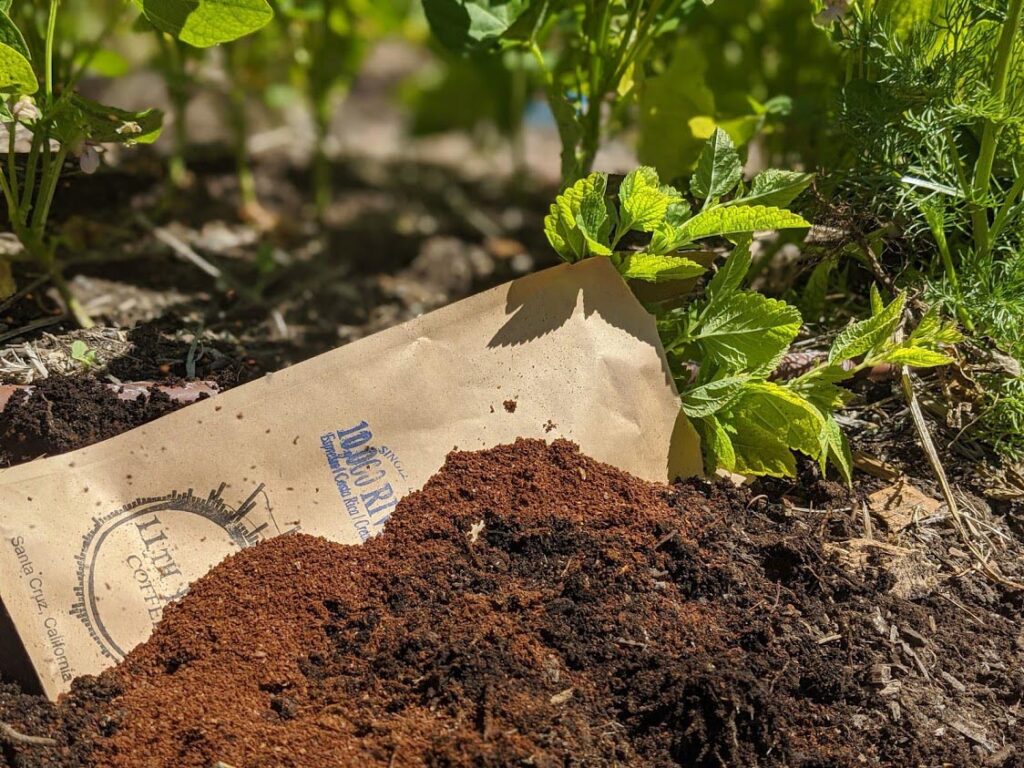
Understanding Coffee Grounds in Composting:
- Green Material: Coffee grounds are classified as green or nitrogen-rich material in composting.
- High Nitrogen Content: Coffee grounds contain high levels of nitrogen, which is essential for plant growth and vitality.
- Importance of Balance: It’s crucial not to add coffee grounds in large quantities to the compost pile as they can upset the carbon-to-nitrogen ratio.
Tips for Successful Coffee Grounds Composting:
- Mixing with Other Materials: Combine coffee grounds with brown or carbon-rich materials like dry leaves or straw to maintain a balanced composting process.
- Optimal Moisture Level: Ensure that the compost pile has the right moisture level, neither too wet nor too dry, to facilitate decomposition.
- Regular Turning: Regularly turn and aerate the compost pile to provide oxygen, which is necessary for the breakdown of organic matter.
Conclusion:
By adhering to these basic principles of coffee grounds composting, you can effectively utilize this resource to create nutrient-rich compost for your garden.
The Benefits of Composting Coffee Grounds
Composting coffee grounds offers a multitude of benefits to both your garden and the environment.
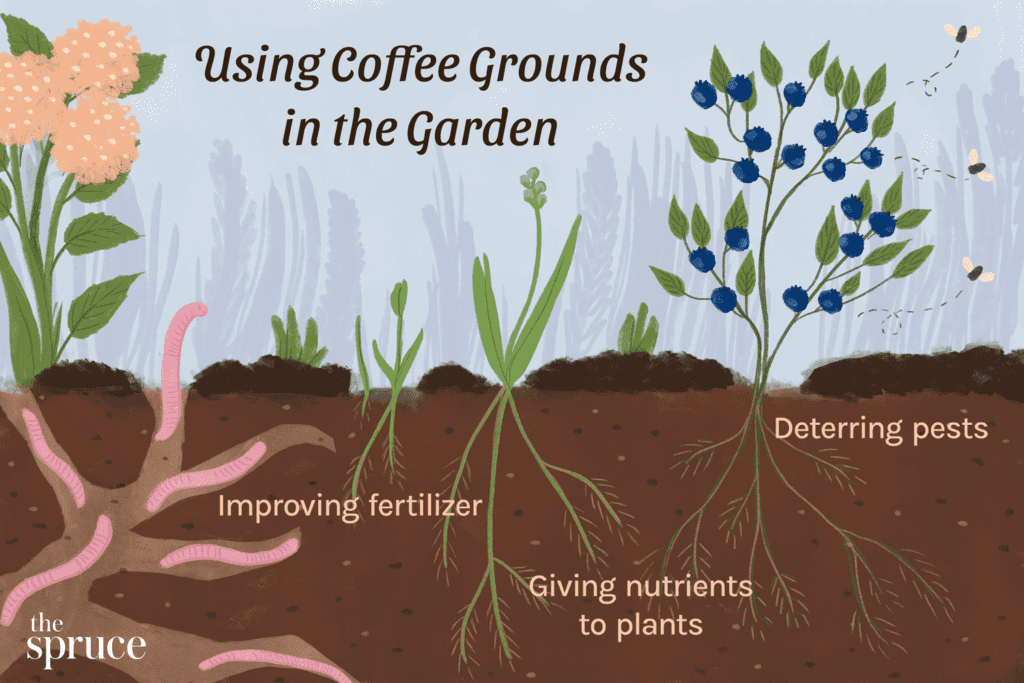
Nutrient-Rich Compost
- Essential Nutrients: Coffee grounds provide essential nutrients like nitrogen, potassium, and phosphorus that plants need for healthy growth.
- Carbon-to-Nitrogen Ratio: Coffee grounds have a high carbon-to-nitrogen ratio, making them a valuable source of sustainable energy for microorganisms in compost piles.
Soil Structure and Water Retention
- Enhanced Soil Structure: Composting coffee grounds helps create a loose and crumbly soil texture, allowing roots to penetrate easily and access vital nutrients and moisture.
- Improved Water Retention: The organic matter in coffee grounds improves soil water retention, helping plants withstand drought conditions and resist diseases.
Sustainable Gardening Practices
- Promotes Sustainable Gardening: Composting coffee grounds is a sustainable practice that replenishes soil fertility and promotes a healthier garden environment.
- Resilient Ecosystem: By incorporating coffee grounds into composting, you are contributing to a more resilient and sustainable gardening ecosystem.
These points highlight the numerous benefits of composting coffee grounds, emphasizing their role in enriching soil with essential nutrients, improving soil structure and water retention, and promoting sustainable gardening practices.So why let those precious coffee grounds go to waste when you can reap the rewards of composting?
Selecting the Right Coffee Grounds for Composting
To ensure successful composting of coffee grounds, it is important to select the right type of grounds. Ideally, you should aim for used coffee grounds that are organic and free from additives such as sugar, milk, or flavorings. These additives can interfere with the composting process and may attract pests.
Composting Different Types of Coffee:
- Caffeinated vs. Decaffeinated: Both caffeinated and decaffeinated coffee grounds can be composted. However, limit decaffeinated grounds due to potential chemical content from the decaffeination process.
- Preference for Freshly Brewed or Used Grounds: Choose freshly brewed or used coffee grounds over instant ones. They have a higher nitrogen content, aiding faster decomposition.
Considerations for Coffee Grounds Size:
- Grind Size: Opt for medium to coarse grounds for composting. Finer grounds may clump together, hindering airflow in the compost pile.
Conclusion:
When composting coffee grounds, prioritize freshly brewed or used grounds for optimal nitrogen content. Limit decaffeinated grounds due to potential chemical residues. Additionally, select a medium to coarse grind size to ensure proper airflow within the compost pile.
“Death Wish Coffee grounds are a fantastic addition to my composting routine. They enrich the soil with essential nutrients, promoting healthier plant growth and increasing the fertility of my garden. Their fine texture makes them easy to incorporate into the compost pile and speeds up the decomposition process. Plus, using coffee grounds in composting helps reduce waste by repurposing leftover grounds from brewing.
However, their acidity level can be too high for certain plants, so it’s essential to monitor pH levels and balance with other compost materials. Additionally, the strong coffee aroma may attract pests if not properly managed. Overall, Death Wish Coffee grounds are a valuable resource for environmentally-friendly composting practices.”
✅ Bold flavor: Offers a rich and intense coffee taste.
✅ Certified organic: Ensures quality and environmentally friendly production methods.
✅ Fine grind: Facilitates quick brewing and extraction of flavor.
✅ Versatile: Suitable for various brewing methods, including drip, espresso, and French press.
✅ Strong aroma: Delivers an enticing scent that enhances the coffee experience.
❌ Limited availability: May not be readily accessible in all locations.
❌ Intense flavor: Might be too strong for those who prefer milder coffee.
❌ Not suitable for all tastes: Some drinkers may find it too bitter or acidic.
❌ Potential health risks: Excessive consumption can lead to jitteriness or sleep disturbances.
❌ Environmental impact: Packaging and shipping processes may contribute to carbon footprint.
Preparing Your Composting Bin for Coffee Grounds
Preparing your composting bin for coffee grounds is an essential step in ensuring the success of your composting process. Before adding coffee grounds, it is important to clean and sanitize your bin to prevent the growth of harmful bacteria or fungi.
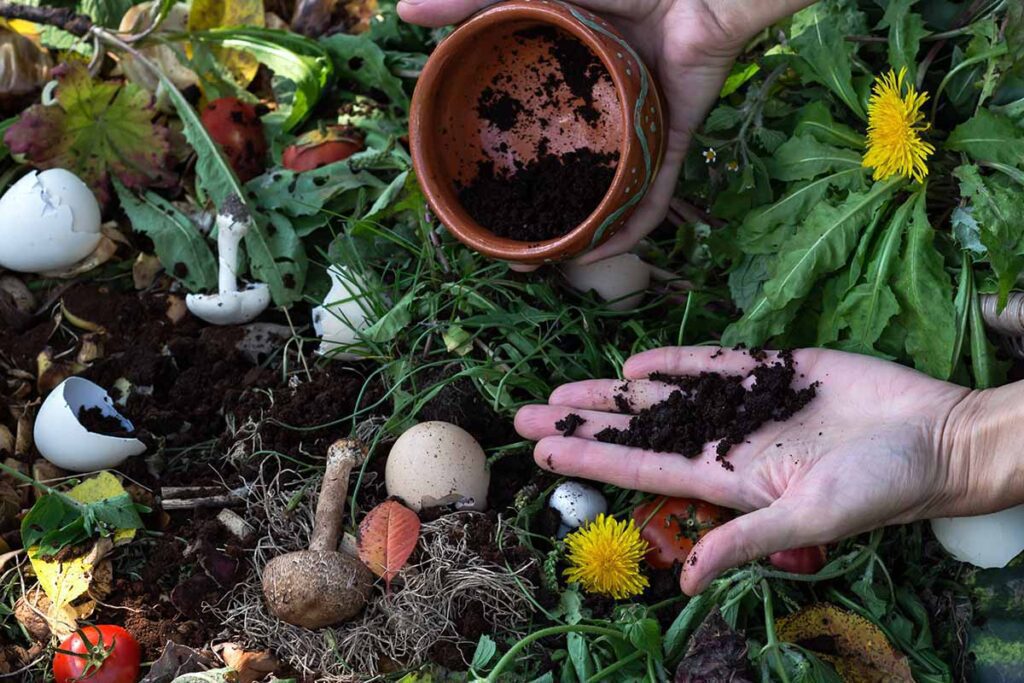
Cleaning the Bin
- Empty the bin and remove any existing compost.
- Use a mild detergent and hot water to thoroughly clean the bin, scrubbing away any residue or debris.
Lining the Bottom
- Line the bottom with a layer of newspaper or cardboard to absorb excess moisture and prevent the compost from sticking to the bin.
- Add a layer of straw or dry leaves on top of the newspaper to provide carbon-rich materials to balance the nitrogen-rich coffee grounds.
Ensuring Proper Aeration and Drainage
- Drill several small holes in the sides and bottom of the bin to allow adequate airflow and prevent water pooling.
- Good airflow is crucial for the decomposition process, enabling beneficial microorganisms to thrive and break down organic matter efficiently.
- Place the bin on a well-draining surface to avoid saturation and the development of unpleasant odors.
By following these steps to prepare the composting bin, you create an optimal environment for the coffee grounds to decompose efficiently and produce nutrient-rich compost for your garden.
After using the VIVOSUN Tumbling Composter in my gardening endeavors, I must say it’s been a game-changer. Its efficient tumbling design has significantly sped up the composting process, providing me with rich, nutrient-dense compost for my garden in no time. The dual chamber system allows me to have a continuous supply of compost, ensuring there’s always enough for my plants.
While it does require some physical effort to rotate, the sturdy construction and easy assembly make up for it. However, I did notice that it might be a bit large for smaller spaces, and the lid could seal better. Overall, it’s been a valuable addition to my gardening routine, promoting sustainability and healthier plant growth.
- Efficient tumbling design for faster composting.
- Dual chamber system allows continuous composting.
- Sturdy construction with durable materials.
- Easy to assemble and use.
- Aeration system promotes decomposition.
- May be too large for small spaces.
- Requires some physical effort to rotate when full.
- Lid design could be improved for better sealing.
- Some users reported issues with stability on uneven ground.
- Not suitable for composting large quantities of material at once.
Properly Storing Coffee Grounds for Composting

Proper Storage of Coffee Grounds for Composting:
- Use an Airtight Container: Store coffee grounds in an airtight container to prevent moisture and odors from compromising their quality.
- Choose a Dark, Opaque Container: Opt for materials like ceramic or stainless steel to shield the grounds from light exposure, preserving their beneficial nutrients.
- Ensure a Tight-Fitting Lid: Select a container with a tight-fitting lid to create a sealed environment, preventing air from entering and causing oxidation.
Ideal Storage Conditions:
- Cool and Dry Location: Store the container in a cool, dry place such as a pantry or cupboard to maintain freshness.
- Avoid Heat and Sunlight: Keep the coffee grounds away from heat sources and direct sunlight to prevent the breakdown of organic matter and preserve quality.
Conclusion:
By following these storage guidelines, you can maintain the longevity and freshness of your coffee grounds, ensuring they remain potent contributors to your compost pile’s nutrient-rich ecosystem.
Adding Coffee Grounds to Your Compost Pile
Adding coffee grounds to your compost pile is a simple and effective way to enhance the nutrient content of your soil. Coffee grounds are rich in nitrogen, which is an essential nutrient for plants’ healthy growth and development. When added to your compost pile, coffee grounds help create a balanced mix of organic matter, improving the overall quality of the compost.
To add coffee grounds to your compost pile, follow these steps:
Collecting Coffee Grounds
- Collect used coffee grounds from your daily coffee brewing routine.
Balancing the Compost Ratio
- Add coffee grounds in moderation to avoid disrupting the balance of your compost pile.
- Aim for a ratio of one part coffee grounds to four parts other compostable materials, such as leaves, grass clippings, and vegetable scraps.
- This balanced blend ensures the necessary carbon-to-nitrogen ratio for optimal decomposition.
Adding Coffee Grounds to the Compost Pile
- Spread a thin layer of coffee grounds over the existing organic materials in your compost pile.
- Avoid clumping the grounds together and instead distribute them evenly to prevent anaerobic conditions.
- Consider giving the pile a gentle turn or mix to ensure proper aeration and the incorporation of coffee grounds with other compostable matter.
This will encourage the breakdown of organic materials and promote the growth of beneficial microorganisms, resulting in nutrient-rich compost that will nourish your plants and enrich your garden soil.
Balancing Coffee Grounds with Other Compostable Materials
When it comes to composting coffee grounds, it’s important to strike the right balance with other compostable materials. While coffee grounds are a valuable addition to your compost pile, using them in excess can lead to issues such as imbalanced nutrient ratios and aeration problems. To ensure optimal composting, it’s essential to combine coffee grounds with a variety of other organic materials.

Incorporate Various Materials: Combine kitchen scraps (fruit and vegetable trimmings), yard waste (leaves, grass clippings), and other organics (shredded newspaper, cardboard) for a diverse mix.
Promoting Microbial Activity: This diverse blend fosters microbial activity and enhances nutrient availability in the compost pile.
Carbon-to-Nitrogen Ratio: Aim for a ratio of approximately 30 parts carbon-rich materials (e.g., dry leaves) to 1 part nitrogen-rich materials (e.g., coffee grounds).
Efficient Breakdown: This balance facilitates efficient breakdown of coffee grounds while ensuring nutrient availability for plant growth in the finished compost.
Conclusion:
By incorporating a diverse range of compostable materials and maintaining the appropriate balance, you can optimize the composting process for coffee grounds. This ensures efficient decomposition and nutrients availability, ultimately benefiting your garden plants.
Maintaining the Ideal Moisture Level in Your Compost
Maintaining the ideal moisture level in your compost is crucial for the breakdown of organic materials and the creation of rich, fertile soil. If the compost is too dry, decomposition slows down, while excessive moisture can lead to anaerobic conditions and unpleasant odors. To ensure optimal moisture levels, follow these guidelines.
Monitoring Moisture Content:
- Ideal Consistency: Aim for compost with the consistency of a damp sponge for optimal moisture levels.
- Checking Moisture Levels: Test moisture by squeezing a handful of compost; dripping water indicates it’s too wet, while easy crumbling suggests it’s too dry.
Maintaining Proper Moisture:
- Adding Water or Dry Materials: Adjust moisture by adding water during dry periods or incorporating dry materials if the pile is too wet.
- Application Methods: Use a watering can or hose to sprinkle water over the compost pile, ensuring penetration through the layers of organic matter.
- Balancing Moisture: Incorporate dry materials like straw, shredded newspaper, or dry leaves if the pile becomes too wet, aiding in moisture absorption and restoration of balance
By closely monitoring and adjusting the moisture content of your compost, you can create the perfect environment for decomposition. Remember, a well-maintained moisture level promotes the efficient breakdown of organic matter, leading to nutrient-rich compost that will enhance the growth and vitality of your plants.
The following table shows the maintaining the ideal moisture level in compost
| Aspect | Recommendation |
| Ideal Moisture Level | Aim for compost with the consistency of a damp sponge, approximately 50-60% moisture. |
| Monitoring Method | Squeeze a handful of compost; if it drips, it’s too wet; if it crumbles, it’s too dry. |
| Adjusting Moisture | Add water during dry periods, ensuring it penetrates through layers. |
| Correcting Excess Moisture | Incorporate dry materials like straw, shredded newspaper, or dry leaves to absorb excess moisture. |
| Importance of Proper Moisture | Crucial for microbial activity, efficient decomposition, and prevention of anaerobic conditions. |
Turning and Aerating Your Coffee Grounds Compost
Turning and aerating your coffee grounds compost is an essential step in the composting process that helps promote decomposition and breakdown of organic materials.
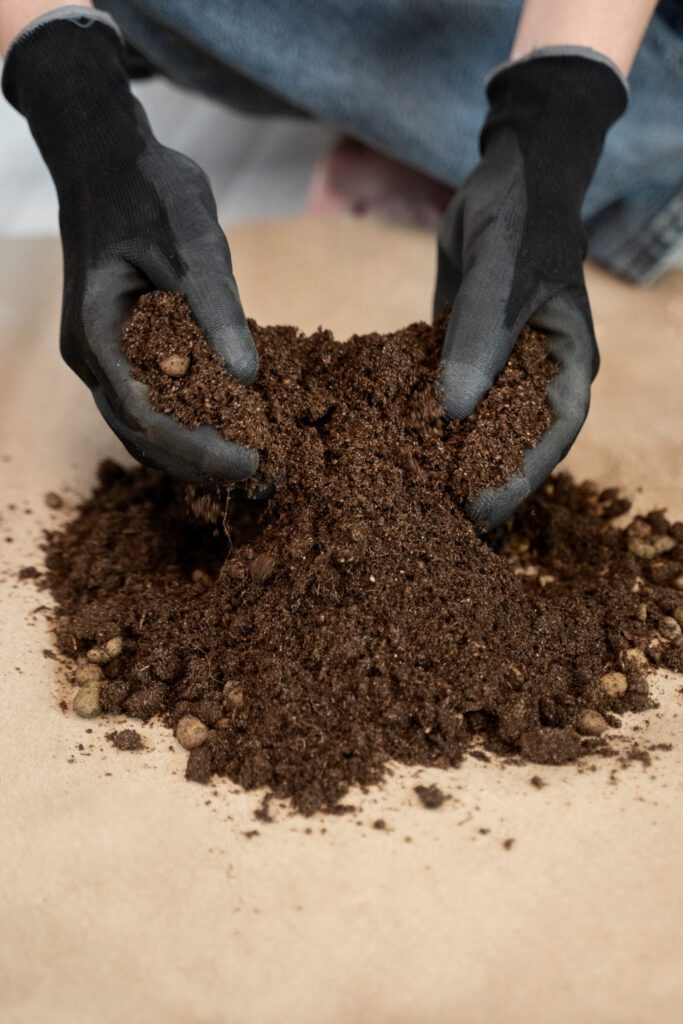
Importance of Turning Coffee Grounds Compost:
- Providing Oxygen: Turning or stirring the compost introduces oxygen to microorganisms, accelerating decomposition and preventing odors.
- Even Moisture Distribution: Regular turning ensures even distribution of moisture throughout the pile, promoting efficient decomposition.
- Introducing Fresh Materials: Turning the compost mixes fresh materials into the center of the pile, where decomposition is most active.
Benefits of Turning:
- Preventing Accumulation: Regular turning prevents the accumulation of compacted, undecomposed matter, promoting breakdown of the entire compost pile.
- Maintaining Activity: Turning the compost revitalizes microbial activity, maintaining the composting process’s momentum.
Frequency and Technique:
- Every Few Weeks: Turn the compost every few weeks or when it begins to cool down or emit unpleasant odors.
- Even Mixing: Aim to mix the outer edges of the pile with the center, ensuring equal decomposition throughout.
Safety Precautions:
- Wear Gloves: Protect your hands by wearing gloves while handling the compost pile.
- Take Precautions: Take necessary precautions to avoid potential hazards associated with composting activities.
Conclusion:
Regularly turning and aerating your coffee grounds compost is essential for maintaining optimal decomposition conditions and preventing odor buildup. By incorporating this practice into your composting routine, you can ensure efficient breakdown of organic matter and create nutrient-rich compost for your garden.
Taking the time to turn and aerate your coffee grounds compost will contribute to the production of nutrient-rich compost that can enhance your garden’s fertility and promote sustainable gardening practices.
Monitoring and Adjusting the Temperature of Your Compost
To ensure the successful decomposition of your coffee grounds compost, it is crucial to monitor and adjust the temperature regularly. Composting is an intricate process that relies on the activity of microorganisms, and these organisms thrive within specific temperature ranges. Ideally, your compost should maintain a temperature between 135°F (57°C) and 160°F (71°C) for efficient breakdown of organic matter.
- Insert the thermometer probe into the center of the compost pile, avoiding contact with the sides of the bin or any large objects.
- Take multiple readings at different depths to get an accurate understanding of the overall temperature within the compost.
- The warmest areas will be found in the center of the pile, as the temperature naturally varies throughout.
- If the temperature is below the desired range, it indicates a lack of microbial activity. Add more nitrogen-rich materials like grass clippings or fresh fruit and vegetable scraps to kick-start decomposition.
- If the temperature exceeds the upper limit, it suggests excessive microbial activity, which can lead to nutrient loss and potential odors. Turn the pile more frequently, increase aeration, and add carbon-rich materials like dry leaves or shredded newspaper to cool down the compost.
- Maintaining the optimal temperature range (130°F to 160°F or 54°C to 71°C) is essential for a balanced and successful composting process.
- Composting is a delicate ecosystem that requires close attention and adjustments. Monitoring and adjusting the temperature helps ensure a healthy and productive environment for the breakdown of coffee grounds and other organic materials.
By following these steps and using a reliable compost thermometer, you can effectively monitor and maintain the optimal temperature for efficient composting.Your efforts will result in nutrient-rich compost that can be used to enrich your garden soil, promoting plant growth and sustainability.
The following table explain about monitoring and adjusting the temperature of your compost
| Aspect | Recommendation |
| Temperature Range | Maintain between 135°F (57°C) and 160°F (71°C) for efficient decomposition. |
| Monitoring Tool | Use a compost thermometer to measure temperatures at different depths, avoiding bin sides. |
| Low Temperature | If below the desired range, add nitrogen-rich materials (e.g., grass clippings, kitchen scraps). |
| High Temperature | If above the upper limit, increase aeration, turn the pile more frequently, and add carbon-rich materials (e.g., dry leaves, shredded newspaper). |
| Temperature Variability within the Pile | Expect warmer areas at the center; readings may vary throughout the compost pile. |
| Importance of Optimal Temperature Range | Crucial for promoting microbial activity, efficient breakdown, and nutrient retention in compost. |
Troubleshooting Common Issues in Coffee Grounds Composting
Plants and gardening are subject to various challenges, and composting coffee grounds is no exception. While coffee grounds offer tremendous benefits as compost, there are common issues that may arise during the process.
To prevent mold growth and maintain a healthy composting environment when using coffee grounds, follow these steps:

- Maintain Proper Moisture Levels:
- Regular Turning and Aeration:
- Balance Carbon and Nitrogen:
- Address Anaerobic Conditions:
By addressing these issues promptly, you can troubleshoot and maintain a thriving coffee grounds composting system that will contribute to the overall health of your garden.
Harvesting and Using Finished Coffee Grounds Compost
When it comes to harvesting and using finished coffee grounds compost, the rewards of your composting efforts are finally within reach. The rich, dark compost that has been meticulously nurtured from coffee grounds can now be used to enhance the health and productivity of your garden.
Harvesting Finished Coffee Grounds Compost:
- Using Garden Fork or Shovel: Carefully scoop out the finished compost from the bin using a garden fork or shovel.
- Observing Transformation: Notice the transformation from recognizable coffee grounds to a crumbly, earthy substance rich in microorganisms and nutrients.
- Avoiding Disturbance: Take care not to disturb any worms or beneficial organisms present in the compost bin while collecting the compost.
Utilizing Finished Compost:
- Incorporating into Soil: Begin by incorporating the compost into your soil to improve its structure and fertility.
- Application Methods:
- Spread a layer of compost over garden beds.
- Mix compost into potting soil for container plants.
- Benefits for Plants:
- Nutrient Release: The compost gradually releases nutrients, enhancing plant health and vitality.
- Moisture Retention: Compost helps retain moisture in the soil, promoting healthy root growth.
- Improved Drainage: Enhances soil drainage, creating an optimal environment for plant roots.
Conclusion:
Harvesting and utilizing finished coffee grounds compost is a rewarding process that benefits your plants and soil health. By incorporating compost into your gardening practices, you can create thriving and vibrant plant ecosystems.As you apply the compost, take note of how your plants respond to the nutrients and organic matter they receive—a lush, thriving garden will be a testament to the power of coffee grounds composting.
Creative Uses for Coffee Grounds Beyond Composting
Coffee grounds have long been praised as an excellent addition to compost bins, but their usefulness doesn’t stop there. Beyond composting, coffee grounds can be put to creative uses that benefit both your garden and other areas of your life.

Using Coffee Grounds as a Natural Fertilizer:
- Nutrient-Rich Content: Coffee grounds contain nitrogen, phosphorus, and potassium, essential nutrients for plant growth.
- Enhancing Plant Vitality: Sprinkling used coffee grounds around plants provides a nutrient boost, promoting healthy growth.
Pest Deterrent Properties:
- Repelling Garden Pests: The scent of coffee repels common pests like slugs and snails.
- Protective Layer: Placing coffee grounds around the base of plants acts as a barrier, deterring pests and protecting vulnerable foliage.
Soil Enrichment Benefits:
- Improving Soil Drainage and Porosity: Coffee grounds enhance soil drainage and porosity, promoting healthier root development.
- Breaking Up Clay soil: Incorporating coffee grounds into heavy clay soil helps break up its compacted structure, improving water infiltration and root growth.
- Moisture Retention in Sandy soils: Sandy soils benefit from the moisture retention properties of coffee grounds, ensuring better water retention for plants.
Conclusion:
Coffee grounds offer multifaceted benefits in gardening, serving as a natural fertilizer, pest deterrent, and soil enhancer. By utilizing them strategically, you can nurture healthier plants and create a more vibrant garden ecosystem.
So, while coffee grounds are fantastic for composting, don’t forget to explore their creative applications in your gardening endeavors.
Sustainable Practices to Enhance Your Coffee Grounds Composting Journey
As you continue on your coffee grounds composting journey, there are several sustainable practices that can enhance your efforts and contribute to a healthier environment.
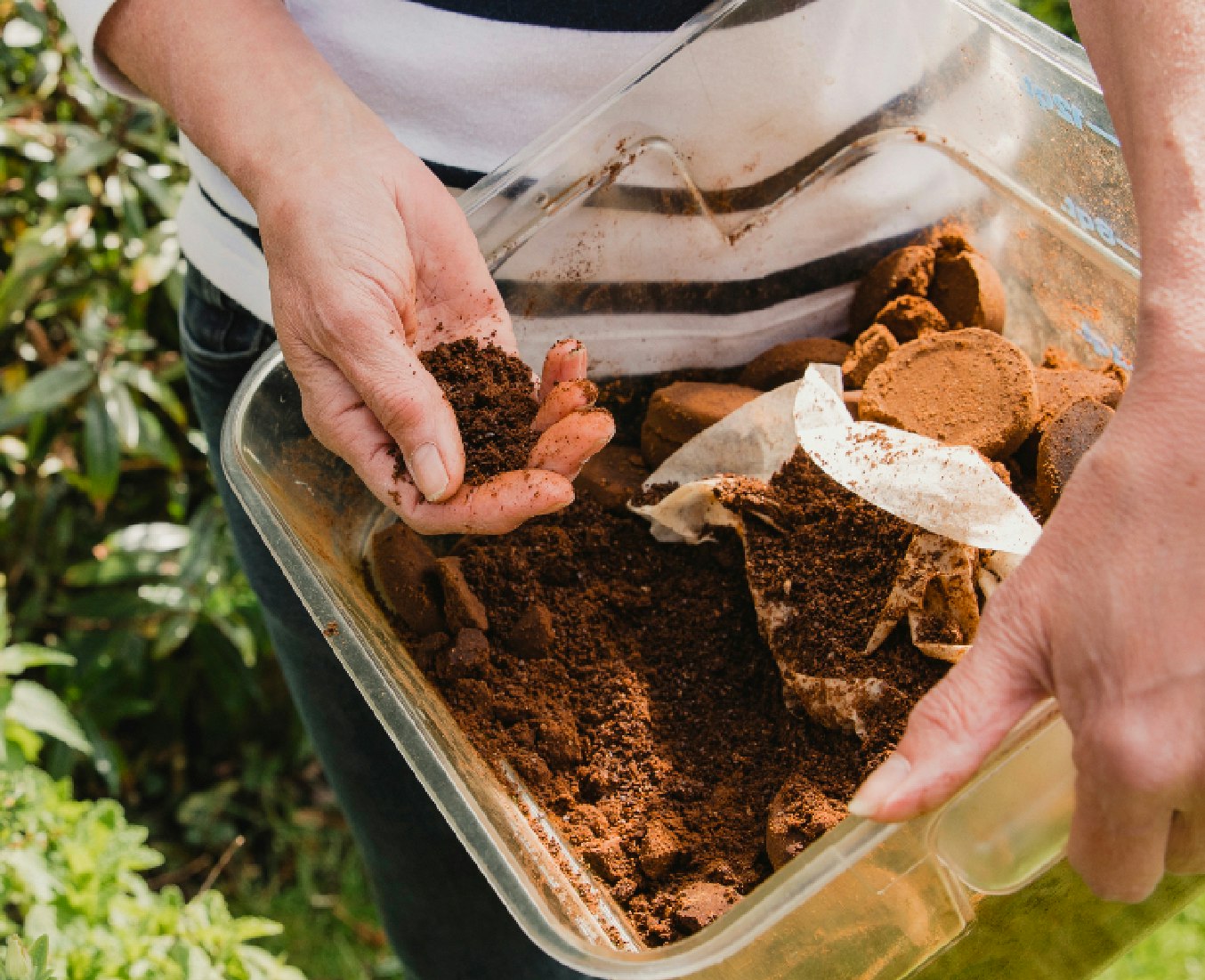
- Benefits: Composting coffee grounds adds nitrogen to the compost, which aids plant growth. Coffee grounds also contain nutrients like phosphorus, potassium, magnesium, and calcium.
- Balancing Compost: Coffee grounds are considered green compost material and should be balanced with brown compost material (dry leaves, newspapers) in a 4-to-1 ratio.
- Avoid Overuse: Coffee grounds should not comprise more than 20-35% of the compost pile material to ensure diverse ingredients and healthy microorganisms.
- Cool Coffee Grounds: Add cool coffee grounds to compost to prevent heat from killing beneficial microbes.
- Composting Methods: Coffee grounds can be composted using cold composting (heap or bin) or vermicomposting (worm composting). However, vermicomposting should not be used for regular coffee grounds due to their impact on worms.
- Using Composted Coffee Grounds: Add composted coffee grounds directly to garden soil to improve drainage, water retention, and aeration. They can also be used as a fertilizer, but not directly on soil without nitrogen supplementation.
- Coffee Grounds as Mulch: Fresh coffee grounds are acidic, but used coffee grounds are neutral. They can be used as mulch to improve drainage, water retention, and aeration, and also deter pests like slugs and snails.
- Sustainable Practices: Sourcing coffee grounds from sustainable and organic sources, minimizing single-use coffee cups, and incorporating other organic waste materials into composting can enhance the eco-friendliness of the process.
- Composting Tips: Use a composting bin made from recycled materials or opt for a DIY solution using repurposed containers to reduce environmental impact and provide a suitable habitat for microorganisms.
By implementing these sustainable practices into your coffee grounds composting journey, you are not only nourishing your garden but also contributing to a greener and more sustainable future. Embrace the power of sustainability and witness the transformative effects it can have on your composting efforts.
Learn more about it in the following video:
FAQ
Can all types of coffee grounds be composted?
Yes, all types of coffee grounds can be composted, including both regular and decaffeinated coffee. However, it is best to avoid using flavored or heavily processed coffee
How much coffee grounds should I add to my compost pile?
As a general guideline, you can add coffee grounds in a ratio of 25% to 30% of your total compost pile. However, it is important to balance coffee grounds with other compostable materials to maintain the ideal carbon-to-nitrogen ratio.
Can I compost coffee filters along with the coffee grounds?
Yes, coffee filters made from unbleached paper can be composted along with the coffee grounds. However, filters made from synthetic materials should be removed and discarded separately.
Should I rinse the coffee grounds before adding them to the compost pile?
No, rinsing the coffee grounds is not necessary. In fact, some residual coffee oils can benefit the composting process by providing nutrients to the microorganisms.
Can I compost coffee grounds in a worm bin?
Yes, coffee grounds can be composted in a worm bin. However, it is important to introduce coffee grounds gradually to avoid overfeeding the worms, as coffee grounds can be acidic.
Can I use compost made from coffee grounds directly on my plants?
Coffee grounds compost should be fully decomposed and cured before using it on plants. Once it turns into a dark, crumbly material, it can be safely used as a nutrient-rich soil amendment.
Are there any potential issues or challenges when composting coffee grounds?
One common issue when composting coffee grounds is the tendency to become compacted and form clumps. This can be resolved by regularly turning and aerating the compost pile.
Can I add coffee grounds to my compost pile during the winter months?
Yes, coffee grounds can be added to your compost pile during the winter months. However, it may take longer for the composting process to occur due to lower temperatures.
Can I add coffee grounds directly to my garden instead of composting them?
While coffee grounds can be used as a mulch around plants, it is generally recommended to compost them first to fully break down the organic matter and prevent any potential issues with soil acidity.
Are there any other uses for coffee grounds besides composting?
Yes, coffee grounds can be used for various purposes, such as as a natural fertilizer, pest repellent, odor absorber, or even in DIY beauty treatments like exfoliating scrubs.

Studied Agricultural Engineering-Plant Protection at University of California, Davis.
Head of Content writing team at Southelmontehydroponics.com

